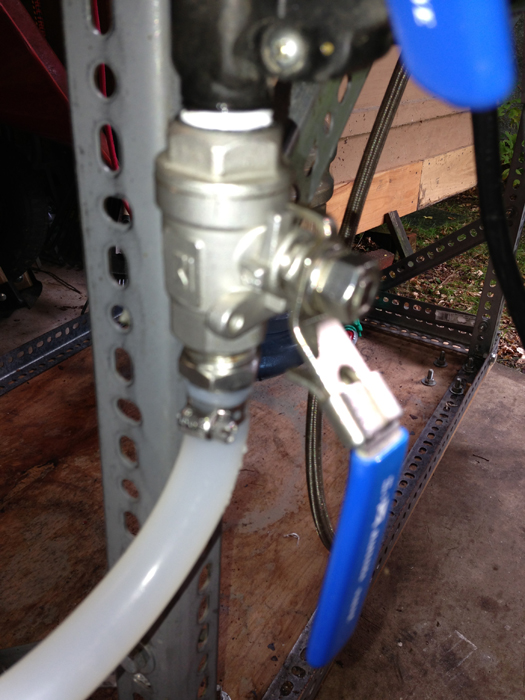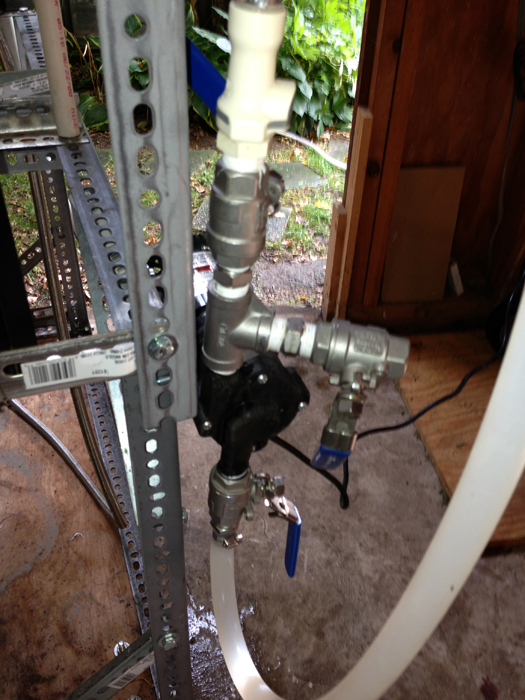BrewDrinkRepeat
Well-Known Member
... can anyone offer any other advice or insight on how to get it to work consistently? I've tried every mounting orientation, every priming method, hot water, cold water (as a test; pumping cold water is useless to me) and the damn thing still loses its prime if the breeze changes direction.
As you can see from the photo, I currently have it in what is the most popular orientation (sideways, with the inlet on the bottom). I prime it by opening the first output valve (the one w/ no hose attached), and then I sssllllooowwwwlllyy open the top output valve to pump hot water up to the mash tun. Nine times out of ten it loses prime within five or six seconds, and the tenth time out of ten it loses prime with none of the output valves open at all.
I am mechanically inept, and I am perfectly willing to accept that I'm still doing something wrong here. If anyone can enlighten me I'd really appreciate it; otherwise I'm probably going to try a Chugger and give up on this thing. (BTW this is an older one with the smaller flow rate, if that makes any difference.)
Thanks in advance!

As you can see from the photo, I currently have it in what is the most popular orientation (sideways, with the inlet on the bottom). I prime it by opening the first output valve (the one w/ no hose attached), and then I sssllllooowwwwlllyy open the top output valve to pump hot water up to the mash tun. Nine times out of ten it loses prime within five or six seconds, and the tenth time out of ten it loses prime with none of the output valves open at all.
I am mechanically inept, and I am perfectly willing to accept that I'm still doing something wrong here. If anyone can enlighten me I'd really appreciate it; otherwise I'm probably going to try a Chugger and give up on this thing. (BTW this is an older one with the smaller flow rate, if that makes any difference.)
Thanks in advance!















![Craft A Brew - Safale BE-256 Yeast - Fermentis - Belgian Ale Dry Yeast - For Belgian & Strong Ales - Ingredients for Home Brewing - Beer Making Supplies - [3 Pack]](https://m.media-amazon.com/images/I/51bcKEwQmWL._SL500_.jpg)














































